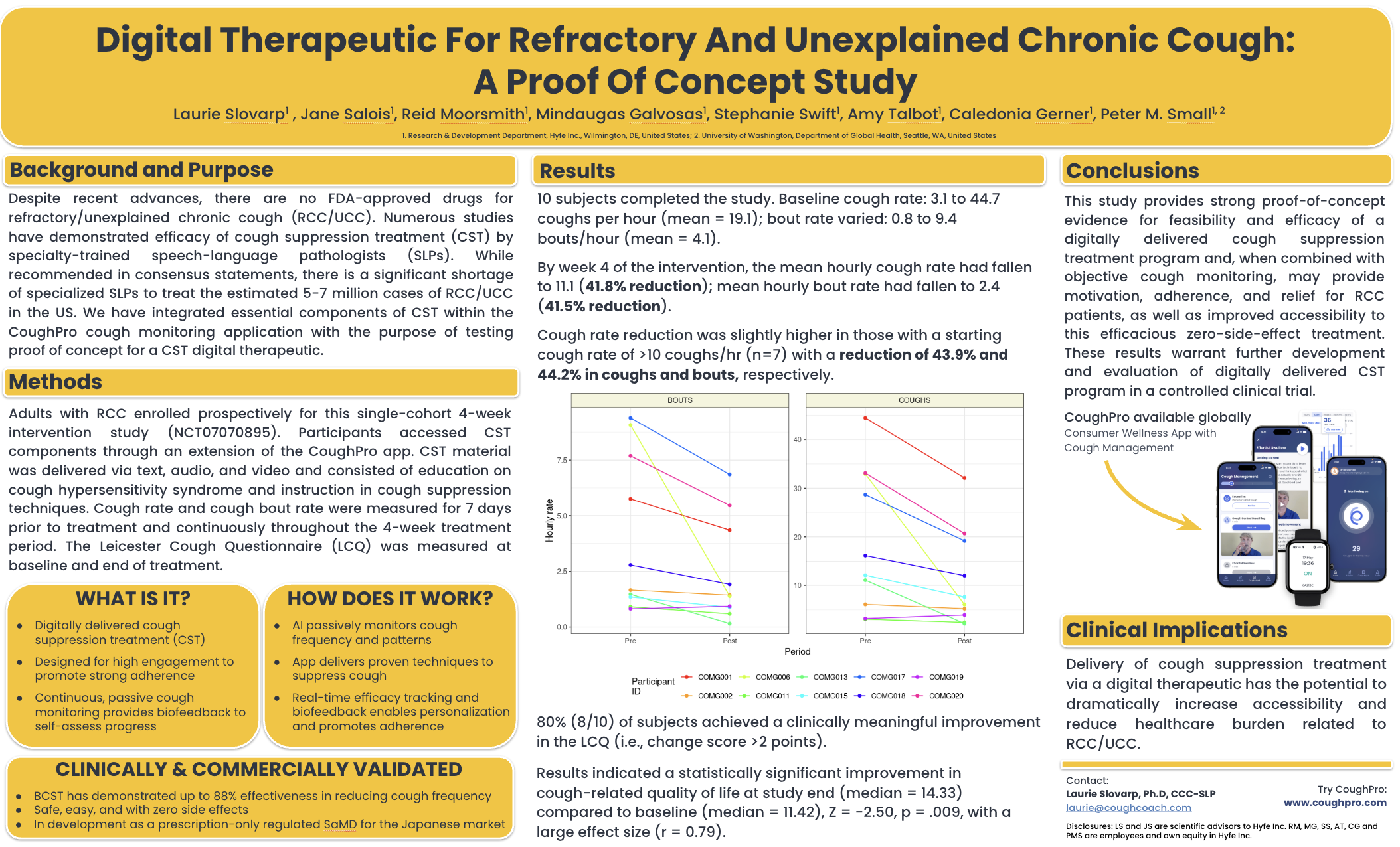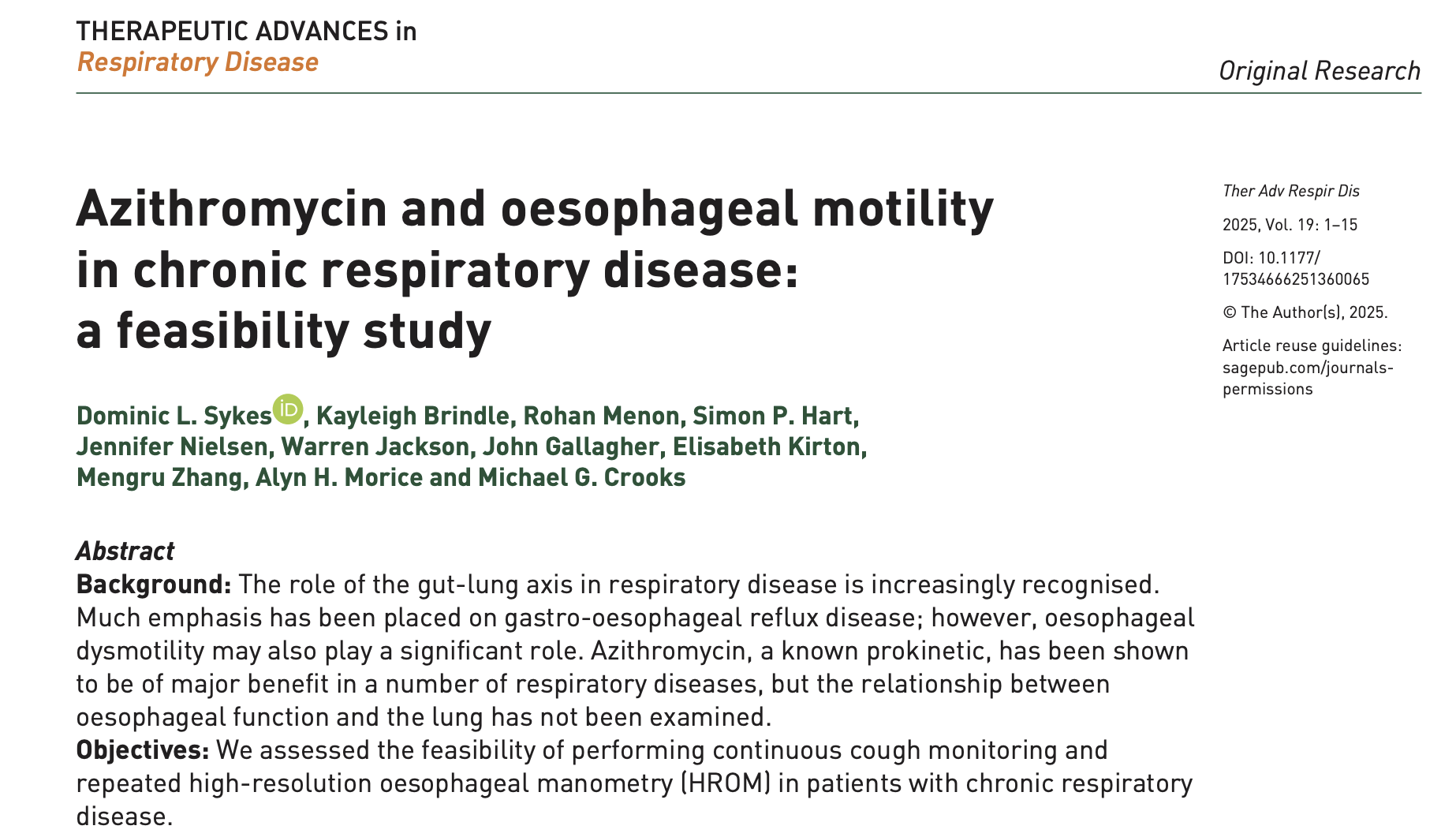
Continuous digital cough monitoring during 6-month pulmonary tuberculosis treatment
Summary
An earlier version of Hyfe’s cough monitoring technology was used to monitor cough for 6 months in this study with patients with pulmonary tuberculosis. Community-based continuous cough monitoring for pulmonary tuberculosis is feasible in low-resource settings.
Introduction The recent advances in digital and wearable technologies with artificial intelligence (AI) enable the use of continuous cough monitoring (CCM) to objectively monitor symptoms as surrogate markers of treatment efficacy in pulmonary tuberculosis (PTB). The objectives of this study are to describe the evolution of cough during PTB treatment in adult and to assess the feasibility of community-based CCM.
Methods We prospectively enrolled PTB adult participants upon treatment initiation. Participants’ coughs were continuously monitored during 6 months with a smartphone loaded with an app able to detect cough by using an AI algorithm.
Results Twenty-two participants were included. The median age was 28.5 (IQR: 22–42) and 62% were male. The median cough per hour (medCPH) was 11.0 (IQR: 7.0–27.0) at week 1. By the end of the intensive phase of PTB treatment at week 8, the medCPH was 3.5 (IQR: 1.5–7.0), which was significantly lower than the medCPH at week 1 (p=0.002). At week 26 (end of treatment), the medCPH was 1.0 (IQR: 1.0–2.5). The adherence to CCM was high during the first 13 weeks of PTB treatment and then waned over time. The adherence was similar during daytime and nighttime.
Conclusion Cough counts rapidly drop during the intensive phase of PTB treatment and then slowly decrease to a low baseline level by the end of the treatment. Community-based CCM using digital technology is feasible in low resource settings.




